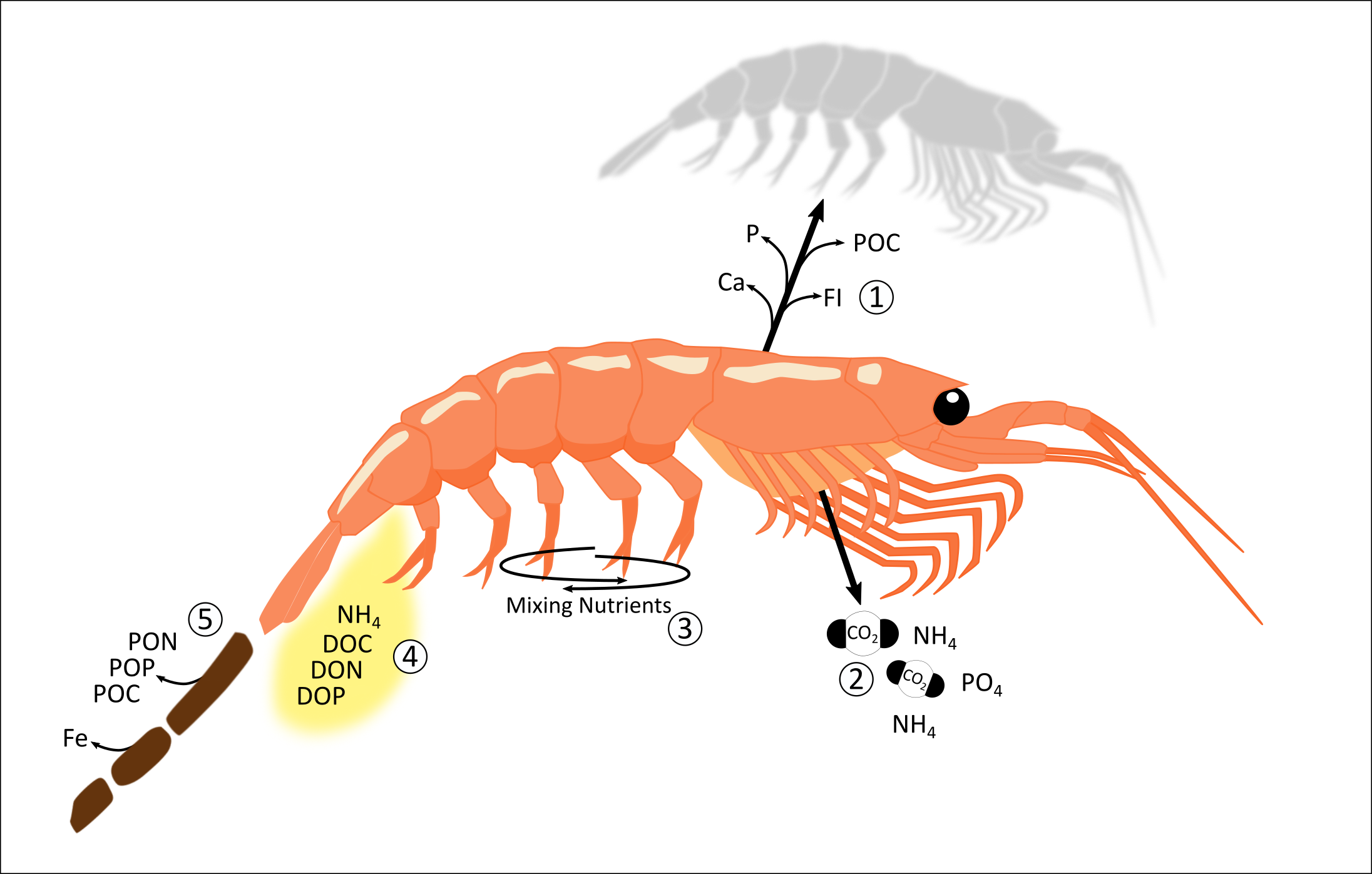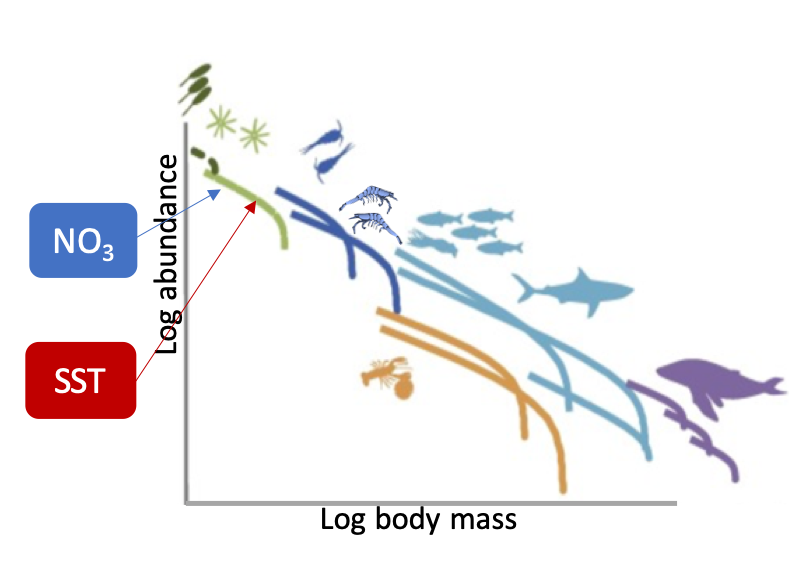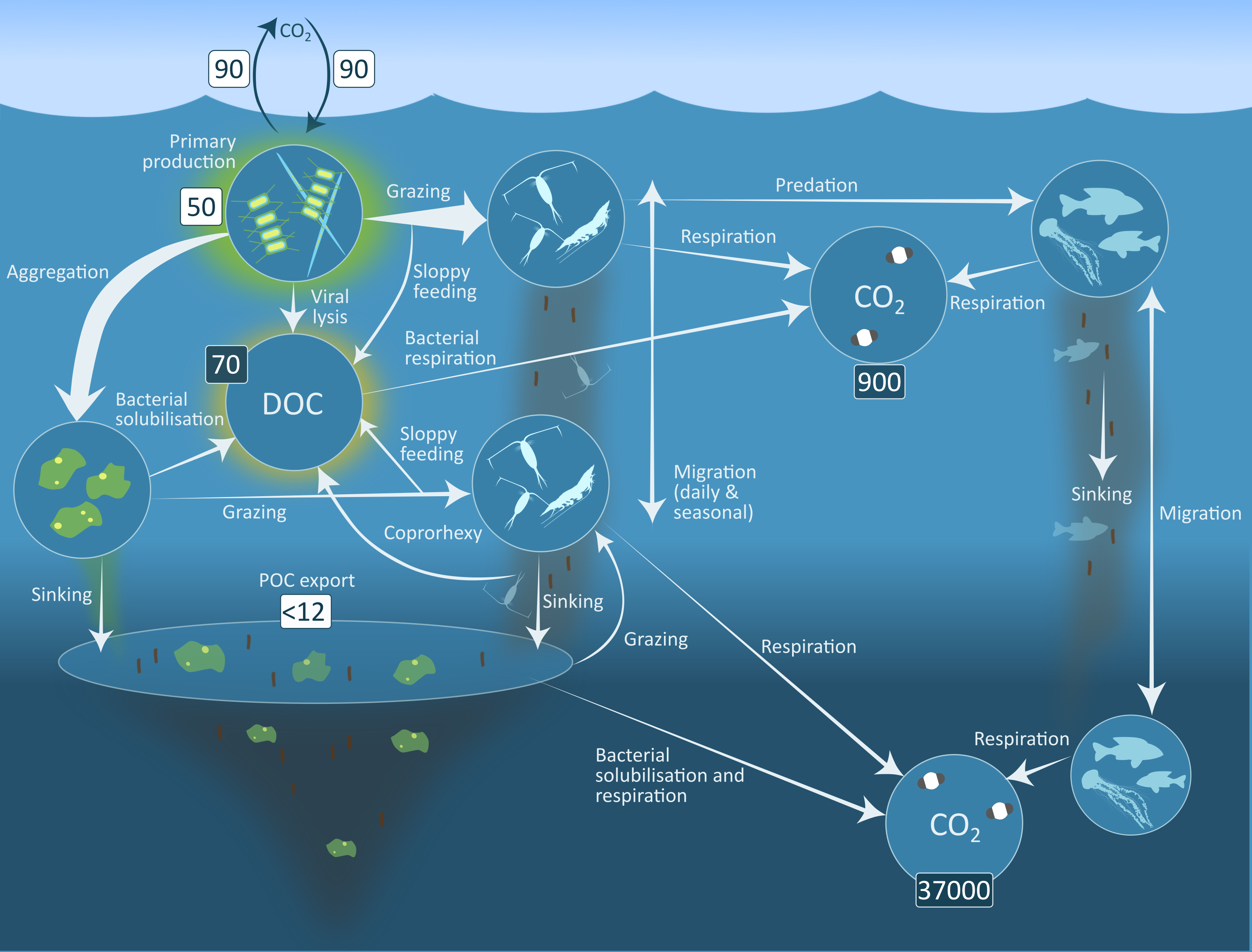Southern Ocean zooplankton carbon sequestration
A WWF-funded project

This is a 3-year project (2022-2025) funded by WWF with the aim to increase knowledge on how krill and salps contribute to carbon (C) sequestration. Through new experiments at the Australian Antarctic Division on Antarctic krill, including pellet and carcass sinking rates and microbial turnover rates, we will get more data to on krill life-history traits and their contribution to C export. Combining these new rates with those from the literature, also on salps, will allow us to more accurately calculate carbon fluxes in the Atlantic Sector of the Southern Ocean. This area is subjected to pressures from krill fishing and climate change which are changing ecosystem structure, and therefore likely biology carbon sinks. Anona Griffiths has joined the team as a Research Assistant to lead this work, having finished her Masters at Imperial in September 2022.
Bottom-up climate change impacts to fisheries
An Imperial College Research Fellowship

- Ocean nutrient concentration as well as sea temperatures are projected to change under warming scenarios
- The amount of nutrients governs the amount and type of plankton species at the bottom of a food chain
- Any changes to plankton abundance or community structure could destabilise food-webs, and impact higher trophic levels harvested by fisheries
- This project involves using numerical models to simulate ocean communities from nutrients to the highest predator, and force these models using climate projections to predict the impact of climate change on potential fishery yield
- The Southern Ocean ecosystem is used as a case-study, focussing on the krill fishery
Ocean plankton poo carbon sink

- Phytoplankton (algae) and zooplankton (shrimp-like animals) that live in the surface ocean both contribute to sinking carbon
- Phytoplankton take in carbon dioxide from the atmosphere and convert it into cellular mass. Many phytoplankton are then consumed by grazers, but some die naturally and their cells full of carbon sink to the deep ocean
- Zooplankton consume phytoplankton and release faecal pellets (poo!) also full of carbon. These can sink quickly to the bottom of the ocean
- Both dead phyto- and zooplankton feacal pellets sink huge amounts of carbon to the deep ocean globally every year. Different oceans sink different amounts of carbon and as biology is complex it can be difficult to describe these processes in climate models
- Much of my work in this area focusses on what drives the carbon sink in different reions and how this may be affected by climate change
